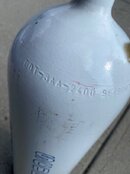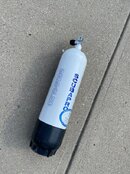1969ivan1
Contributor
- Messages
- 289
- Reaction score
- 29
I have a steel tank I am trying to ID so I can sell it. The tank is marked FABER 2400 made 1/95 dot 3aa-2400 96/9001. I suspect it is a steel 72 that scubapro sold a while back but wanted to make sure before I put it up for sale. Any help would be appreciated.






